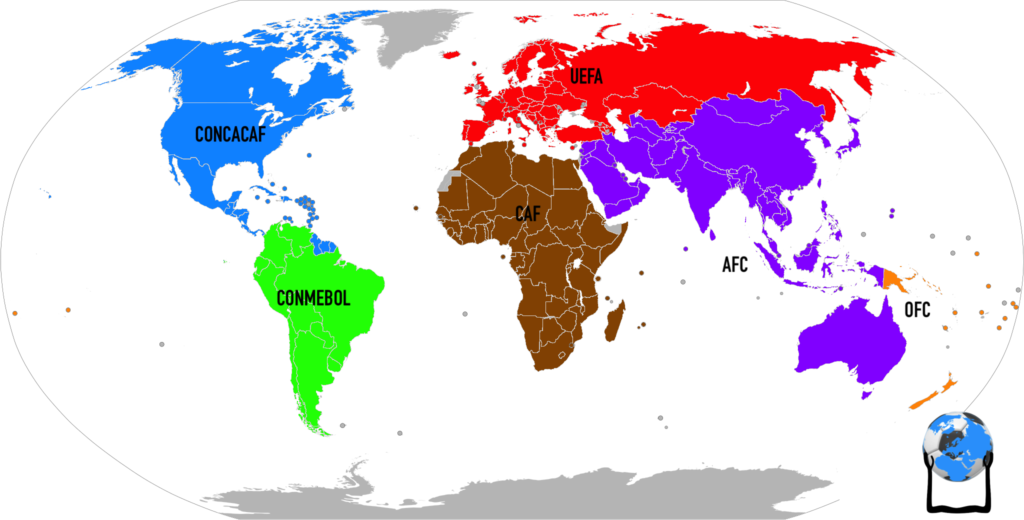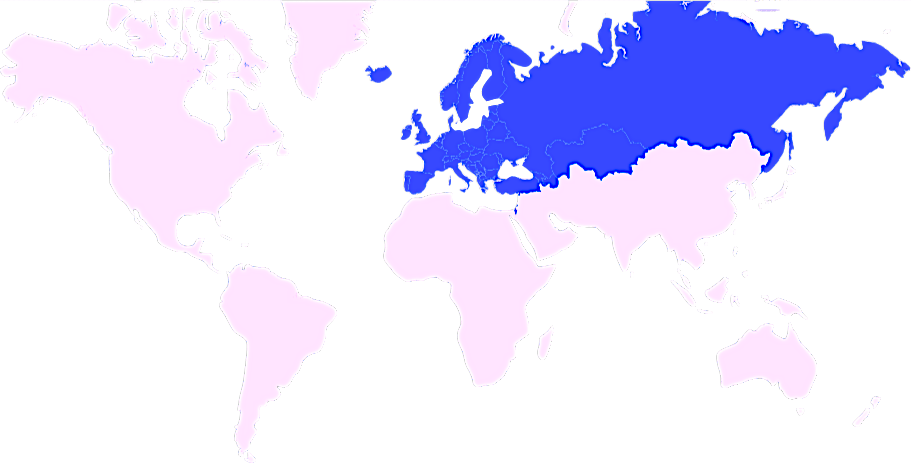
FIFA AFC CONCACAF CONMEBOL UEFA
Federation Rankings
Review of the rankings

FIFA
The FIFA Ranking is the official ranking of the national teams conducted by the world football federation. The first release was presented in 1993.
The ranking is primarily used to determine the allocation of teams to individual pots as part of the draw procedure, primarily the FIFA World Cup or other seeds in football competitions. It is also used as the ultimate criterion for differentiating team spots, which is reflected in many tournament regulations.
The official FIFA ranking is also used by other federations, e.g., AFC used FIFA ranking points to calculate MA Ranking. In the past, it was also used by CONCACAF.
The meaning of the Ranking is also universal, and the Ranking is a phenomenon in itself, existing in public space. The position occupied in the ranking is the basic reference point to assess the strength of national teams.
The FIFA Ranking, since August 2018 is based on ELO Method, where importance match factor, outcome factor and expected outcome factor are considered (the home-field advantage factor and difference goals factor are not used). There are other additional conditions related to penalty shoot-out and knock-out rounds.
FIFA also introduced in 2003 the FIFA Women’s World Ranking.

AFC
The official AFC Club Competitions Ranking (formerly: Member Association Ranking), this a ranking valuated strength of countries within club football in Asia. The ranking has been launched by the AFC in 2014. The ranking is used for determining berths allocation in AFC club competitions (seeding of teams) as well as for allocation the number of entries (clubs) to the certain phase of competitions.
The ranking is based on the results of clubs’ matches in AFC competitions (AFC Champions League, AFC Cup) played from the 2014 season onwards, excluding the 2020 season (the previous version included results from the last 4 years). This is historical-static and matrix formula where points are awarded to clubs for participation in certain phase or outcomes of matches (win/draw). They differ depending on the part of the competition (preliminary, knock-out phase) and on a level of the competition (AFC Champions League, AFC Cup). Then value of points assigned to clubs from one country is sum up within the country and are divided by the number of participating clubs in that tournament (average).
The Ranking until 2019 had been determining by two algorithms. First was, the sum of the AFC points derivated of club’s outcomes over the past 4 seasons which was accounted for 70% (and later 90%) of the AFC ranking points, and the second among them was calculated based on FIFA national team ranking points, and its stake was on 30% (and later 10%) in the AFC ranking points. The ranking therefore mixed club achievements and national team results. Since 2020 FIFA points are not longer observed.

CONCACAF
The official CONCACAF Ranking Index was made for national teams in North and Central America and the Caribbean. The new system (in the form of constantly up-to-date ranking) was introduced in 2018. The ranking is used for determining berths allocation in CONCACAF national teams competitions as well as other issues related regional and international championships within the CONCACAF area.
The Ranking, since March 2018 is based on ELO Method, where importance match factor, outcome factor and expected outcome factors are considered (the home-field advantage factor is also considered, but difference goals factor is not included). It seems to be similar like the FIFA Ranking, but CONCACAF adopted other initial values (t=0) than FIFA. Furthermore, we should remember that CONCACAF has also member countries, being not members of FIFA (mostly there are dependencies of the UK, France and Netherlands).
In 2023, CONCACAF introduced a club ranking index, which will be employed to determine the seeding of teams in future club competitions. Concurrently, a league ranking index was also launched on the same day.
CONCACAF has also rankings related to: Women’s National Team, Men’s Under-20, Women’s Under-20, Men’s Under-17, Women’s Under-17, Futsal and Beach Soccer.

CONMEBOL
The official CONMEBOL Club Ranking is the annual ranking with a historical-static formula when points are awarded to clubs for participation in subsequent editions of CONMEBOL competitions and outcomes of matches. The ranking is used to allocate clubs in the draws for the Copa Libertadores and Copa Sudamericana.
The ranking is determined by combining performance in the CONMEBOL Libertadores over the last 10 years, historic performance in the CONMEBOL Libertadores (50 years), domestic league titles, performance in the CONMEBOL Sudamericana over the last 10 years and historic performance in the CONMEBOL Sudamericana. Because the ranking is taking into consideration domestic tittle it is not typical continental ranking, where only international matches are included.
CONMEBOL don’t publish the ranking constantly. Therefore, each ranking is announced in the separately post on the website. Here are links to the ranking of 2022, ranking of 2023 and ranking of 2024.

UEFA
The UEFA coefficients are based on the results of clubs competing in the five previous seasons of the European club competitions. The ranking system lays down in general the allocation of clubs (seeding, berths, draws) in the UEFA competition.
The ranking system consists of two parts: the association ranking (the associations coefficients) and the club ranking (the clubs coefficients – in the strict sense). Both rankings are connected through the rules of calculation.
The seasonal coefficient of an association determines the number of places allocated to an association (country) in the UEFA club competition. Therefore, the importance of the association coefficients is greater than the club coefficient.
The association ranking is based on the historical-static and matrix formula where points are awarded to clubs for outcomes of matches (but only for qualifiers, play-offs, and group stage), participation in a certain phase or for position taken in stage group stage. They differ depending on the part of the competition (preliminary, group stage, knock-out phase) and on a level of the competition (UEFA Champions League, UEFA Europa League, and UEFA Europa Conference League).
The country coefficient is calculated as an an average score: dividing the number of points awarded, by the total number of clubs representing the association in the season. The outcome combined with scores of four previous season giving the ultimate the country coefficient.
In the club coefficients a slightly different scoring is used (than in the associations coefficient calculation), but similar. That is also historical-static and matrix formula when points are awarded to clubs for participation in a certain phase, for outcomes of matches (only from group stage onwards), for position taken in a group stage and they differ depending on a level of the competition.
The ultimate club coefficient is the sum of the previous five seasons coefficients, or 20% of its association’s coefficient, depending on which is higher.
UEFA provides also Women’s Association coefficient, Women’s Club coefficient, Men’s Futsal National Team Coefficients, as well as not constantly up-to-date: Men’s National Team Coefficient and Women’s National Team Coefficient and Men’s Amateur Coefficient.






